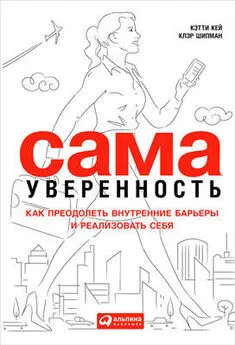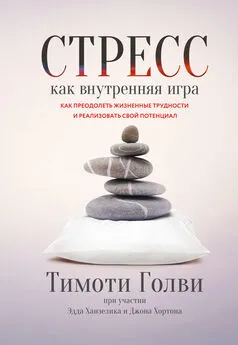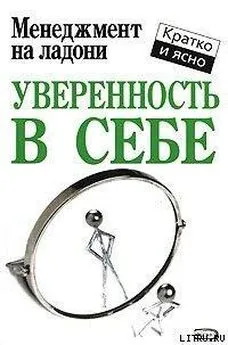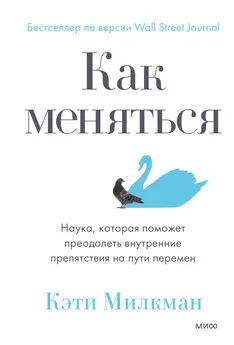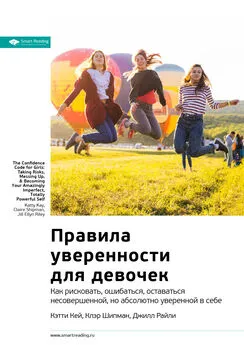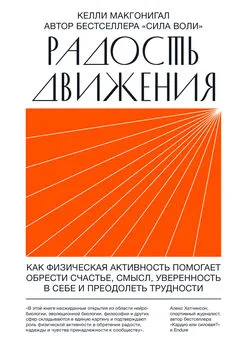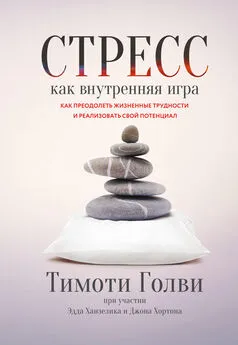Кэтти Кей - Сама уверенность. Как преодолеть внутренние барьеры и реализовать себя
- Название:Сама уверенность. Как преодолеть внутренние барьеры и реализовать себя
- Автор:
- Жанр:
- Издательство:Альпина Паблишер
- Год:2015
- Город:Москва
- ISBN:978-5-9614-3910-6
- Рейтинг:
- Избранное:Добавить в избранное
-
Отзывы:
-
Ваша оценка:
Кэтти Кей - Сама уверенность. Как преодолеть внутренние барьеры и реализовать себя краткое содержание
Сама уверенность. Как преодолеть внутренние барьеры и реализовать себя - читать онлайн бесплатно ознакомительный отрывок
Интервал:
Закладка:
82
В ходе этого поразительного исследования ученые выяснили, что в первые шесть месяцев жизни уровень тестостерона у мальчиков такой же, как в период пубертата. Эксперты полагают, что этот временный подъем уровня тестостерона может влиять на развитие мозга. См.: W. L. Reed et al., “Physiological effects on demography: A long-term experimental study of testosterone’s effects on fitness,” American Naturalist 167, no. 5 (2006): 667–83.
83
Anna Dreber, “Testosterone and Financial Risk Preferences,” Harvard University, 2008.
84
John M. Coates, Joe Herbert, “Endogenous steroids and financial risk taking on a London trading floor,” Proceedings of the National Academy of Sciences 105, no. 16 (2008): 6167–72.
85
Amy Cuddy, “Want to Lean In? Try a Power Pose,” Harvard Business Review , last modified March 20, 2013, http://blogs.hbr.org/2013/03/want-to-lean-in-try-a-power-po-2/.
86
Nicholas Wright, “Testosterone disrupts human collaboration by increasing egocentric choices,” Royal Society of Biological Sciences, 2012.
87
Heber Farnsworth, Jonathan Taylor, “Evidence on the compensation of portfolio managers,” Journal of Financial Research 29, no. 3 (2006): 305–24.
88
Henry Mahncke, “Memory enhancement in healthy older adults using a brain plasticity-based training program,” 2006, www.pnas.org/content/103/33/12523.abstract.
89
Lee Gettler et al., “Longitudinal evidence that fatherhood decreases testosterone in human males,” 2011, http://www.pnas.org/content/early/2011/09/02/1105403108.abstract.
90
R. Baumeister, “The Lowdown on High Self-Esteem,’ ” Los Angeles Times (2005).
91
Nansook Park, “The role of subjective well-being in positive youth development,” Annals of the American Academy of Political and Social Science 591, no. 1 (2004): 25–39.
92
Amy Chua, “Why Chinese Mothers Are Superior,” Wall Street Journal , January 8, 2011, http://online.wsj.com/news/articles/SB10001424052748 704111504576059713528698754.
93
Andrea Ichino, Elly-Ann Lindstrцm, Eliana Viviano, “Hidden Consequences of a First-Born Boy for Mothers,” April 2011, http://ftp.iza.org/dp5649.pdf.
94
Jennifer Crocker, “Contingencies of self-worth: Implications for self-regulation and psychological vulnerability,” Self and Identity 1, no. 2 (2002): 143–49
95
Caroline Adams Miller, “Five Things That Will Improve Your Life in 2013,” последнее изменение 28 декабря 2013, www.carolinemiller.com/five-things-that-will-improve-your-life-in-2013/.
96
Pablo Briсol et al., “Treating Thoughts as Material Objects can Increase or Decrease Their Impact on Evaluation,” January 2013, Psychological Science 24 (1): 41–47 (published online November 26, 2012, doi: 10.1177/0956797612449176).
97
Jennifer Crocker, Jessica Carnevale, “Self-Esteem Can Be an Ego Trap,” Scientific American , August 9, 2013, http://www.scientificamerican.com/article.cfm?id=self-esteem-can-be-ego-trap.
98
Pablo Briсol, Richard E. Petty, Benjamin Wagner, “Body Posture Effects on Self-Evaluation: A Self-Validation Approach,” European Journal of Social Psychology , February 25, 2009.
99
James W. Stigler, James Hiebert, The Teaching Gap: Best Ideas from the World’s Teachers for Improving Education in the Classroom (New York: Free Press, 1999).
100
“Japanese Education Method Solves 21st Century Teaching Challenges in America,” Japan society.org, Japan Society, February 26, 2009, https://www.japansociety.org/page/about/press/japanese_education_method_solves_21st_century_teaching_challenges_in_america.
101
Jean M. Twenge, Elise C. Freeman, “Generational Differences in Young Adults’ Life Goals, Concern for Others, and Civic Orientation, 1966–2009,” PhD diss., San Diego State University, 2012.
102
Liz Funk, Supergirls Speak Out: Inside the Secret Crisis of Overachieving Girls (New York: Touchstone, 2009).
103
Организация экономического сотрудничества и развития, “Gender and Sustainable Development: Maximizing the Economic, Social and Environmental Role of Women,” 2008, http://www.oecd.org/social/40881538.pdf.
104
Catalyst.org, “The Promise of Future Leadership: Highly Talented Employees in the Pipeline,” 2010, http://www.catalyst.org/knowledge/promise-future-leadership-research-program-highly-talented-employees-pipeline.
105
Joanne V. Wood, Elaine Perunovic, John W. Lee, “Positive Self-Statements: Power for Some, Peril for Others,” National Institutes of Health, July 2009.
106
Cecilia L. Ridgeway, “Interaction and the conservation of gender inequality: Considering employment,” American Sociological Review (1997): 218–35.
107
A. O’Neill and Charles O’Reilly, “Overcoming the backlash effect: Self-Monitoring and Women’s Promotions,” Journal of Occupational and Organizational Psychology , 2011.
108
David A. Matsa et al., “A Female Style in Corporate Leadership? Evidence from Quotas,” American Economic Journal: Applied Economics , forthcoming.
Интервал:
Закладка:
